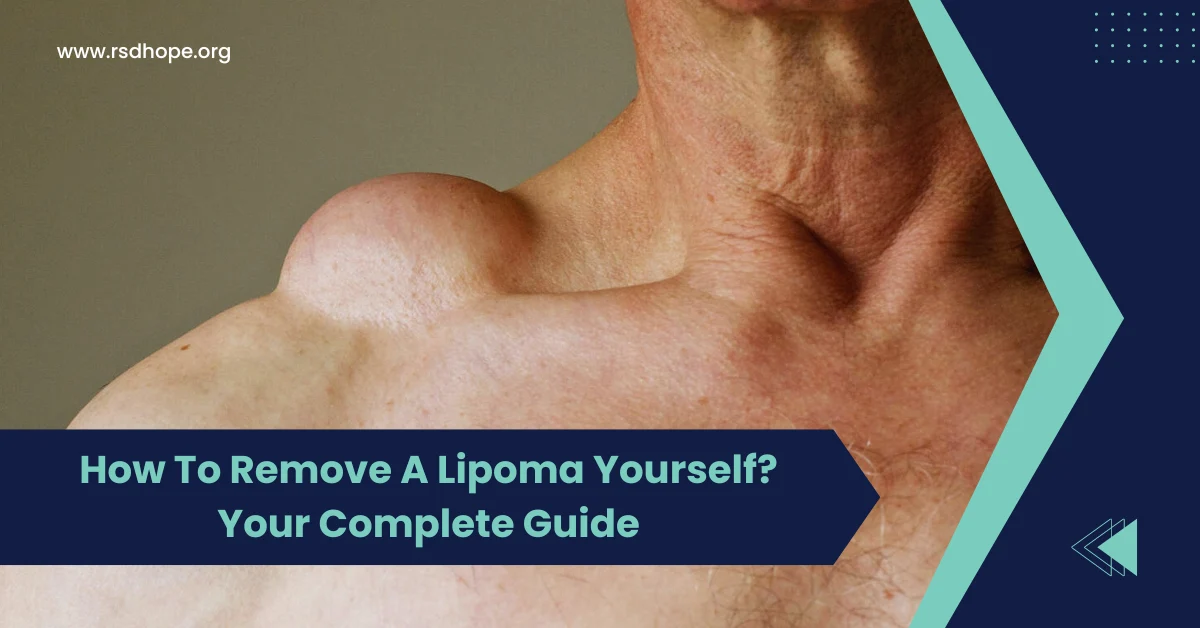Lipomas are soft, fatty lumps that grow under the skin and are usually harmless. Unlike other types of lumps or growths, lipomas are typically non-cancerous and do not pose a serious health risk. However, they can be unsightly and may cause discomfort or self-consciousness. Understanding the symptoms and treatment options for lipomas is essential for anyone dealing with these growths.
Key Takeaways
- Lipomas are benign, fatty lumps that grow under the skin and are usually painless.
- Home remedies like apple cider vinegar and turmeric paste may help reduce the size of lipomas.
- Consulting with a healthcare provider is crucial before attempting to remove a lipoma yourself.
What Is Lipoma?
A lipoma is a soft, fatty lump that develops under the skin. It is made up of fat cells and is typically benign, meaning it is non-cancerous. Lipomas are usually soft to the touch and move easily when pressed. They can occur anywhere on the body but are most commonly found on the neck, shoulders, back, and arms.
Also Read: How To Get Rid Of Crunching Sound In Neck? Find Effective Methods
Symptoms Of Lipoma
The most common symptom of a lipoma is a soft, pliable lump just beneath the skin’s surface. Lipomas are usually painless and grow slowly over time. They can range in size from a small pea to several centimeters in diameter. In some cases, lipomas may feel tender or painful, especially if they press on nearby nerves. It is important to monitor any changes in the size or appearance of a lipoma and report them to a healthcare provider.
How to Remove a Lipoma Yourself?
While it is always best to consult with a healthcare provider before attempting to remove a lipoma yourself, there are some home remedies that may help reduce the size and appearance of these growths.
One popular home remedy is apple cider vinegar. To use this method, soak a cotton ball in apple cider vinegar and apply it directly to the lipoma. Secure the cotton ball with a bandage and leave it on for several hours or overnight. Repeat this process daily until the lipoma reduces in size.
Another home remedy is turmeric paste. Mix turmeric powder with a small amount of olive oil or coconut oil to form a paste. Apply the paste to the lipoma and cover it with a bandage. Leave the paste on for several hours or overnight and rinse it off with warm water. Repeat this process daily for several weeks.
Essential oils like frankincense and tea tree oil may also help reduce the size of lipomas. Mix a few drops of the essential oil with a carrier oil like coconut oil and apply it to the lipoma. Massage the oil gently into the skin and repeat the process daily.
Things to Keep in Mind While Using Home Remedies for Lipoma
While home remedies can be effective in reducing the size of lipomas, it is important to use caution and consult with a healthcare provider before attempting any DIY removal methods. Some home remedies may cause skin irritation or allergic reactions, and there is a risk of infection if the skin is broken or the lipoma is not properly cared for after treatment.
It is also important to note that home remedies may not work for everyone, and some lipomas may require professional medical treatment. If a lipoma is growing rapidly, causing pain, or changing in appearance, it is essential to seek medical attention right away.
When to See a Doctor?
While most lipomas are harmless, there are some warning signs that indicate it is time to see a doctor. These include:
- Rapid growth of the lipoma
- Pain or tenderness in the area of the lipoma
- Changes in the appearance of the lipoma, such as redness or ulceration
- Interference with joint movement or daily activities
If you experience any of these symptoms, it is important to schedule an appointment with a healthcare provider. They can diagnose the lipoma through a physical examination and may recommend imaging tests like an ultrasound or MRI to confirm the diagnosis.
Treatment options for lipomas may include surgical removal, liposuction, or steroid injections. The best course of action will depend on the size and location of the lipoma, as well as the individual’s overall health and personal preferences.
Conclusion
Lipomas are common, benign growths that can be unsightly and uncomfortable. While home remedies like apple cider vinegar and turmeric paste may help reduce the size of lipomas, it is crucial to consult with a healthcare provider before attempting any DIY removal methods. By understanding the symptoms and treatment options for lipomas, individuals can make informed decisions about their health and well-being.
If you are dealing with a lipoma, remember that you are not alone. Many people experience these growths, and there are safe and effective treatment options available. Don’t hesitate to reach out to a healthcare provider for personalized advice and guidance on managing your lipoma.
Read More: How Long Does A Muscle Pump Last? Maximizing Your Gains
FAQs
A: While there is no surefire way to prevent lipomas, maintaining a healthy weight and exercising regularly may help reduce the risk.
A: In some cases, lipomas can run in families, suggesting a genetic component.
A: Lipomas are almost always benign and rarely turn cancerous. However, it is important to monitor any changes in the appearance or growth of a lipoma and report them to a healthcare provider.
A: The effectiveness of home remedies varies from person to person. Some people may see results within a few weeks, while others may not experience any changes. It is important to be patient and consistent with treatment and to consult with a healthcare provider if the lipoma does not improve.
Sources:

